Ferdinand Hodler – The Painter Who Revolutionized Swiss Art
Ferdinand Hodler was one of the principal figures of 19th-century Swiss painting. Hodler worked in many styles during his life. Over the course of...
Louisa Mahoney 25 July 2024
24 April 2024 min Read
Largely forgotten until recent years, Marlow Moss transcended the rigid boundaries of traditional art and binary gender expression. The 20th-century British artist’s bold contributions to European abstraction inspired the likes of Piet Mondrian.
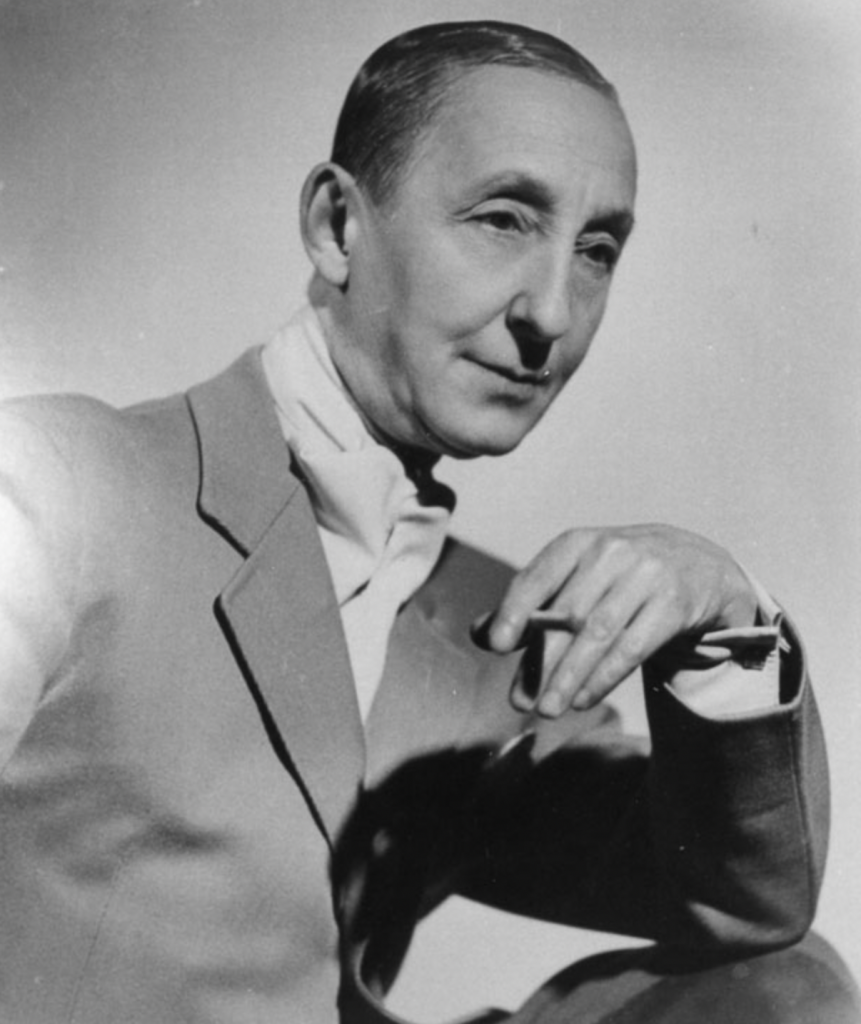
Stephen Storm, Photograph of Marlow Moss, c. 1950s, private collection. Christie’s.
In life and in art, Marlow Moss (1889-1959) always challenged the status quo. As a queer British artist in Paris, she influenced Piet Mondrian and shaped the radical new aesthetics and philosophies of European abstract art, despite being often unjustly classified as a follower of Mondrian posthumously or forgotten altogether.
Moss was born Marjorie Jewel Moss to an upper-class London Jewish family. From the very start, she demonstrated creative prowess in subjects ranging from music and ballet to art and architecture. She then enrolled at the Slade School of Fine Art as a young adult but abandoned her studies by age 20, shifting from a feminine birth name and identity to an unorthodox masculine image.
In 1927, Moss relocated to Paris, where she found herself within an eclectic and experimental avant-garde artist community. The freedom Paris offered also allowed Moss to live authentically as an androgynous lesbian.
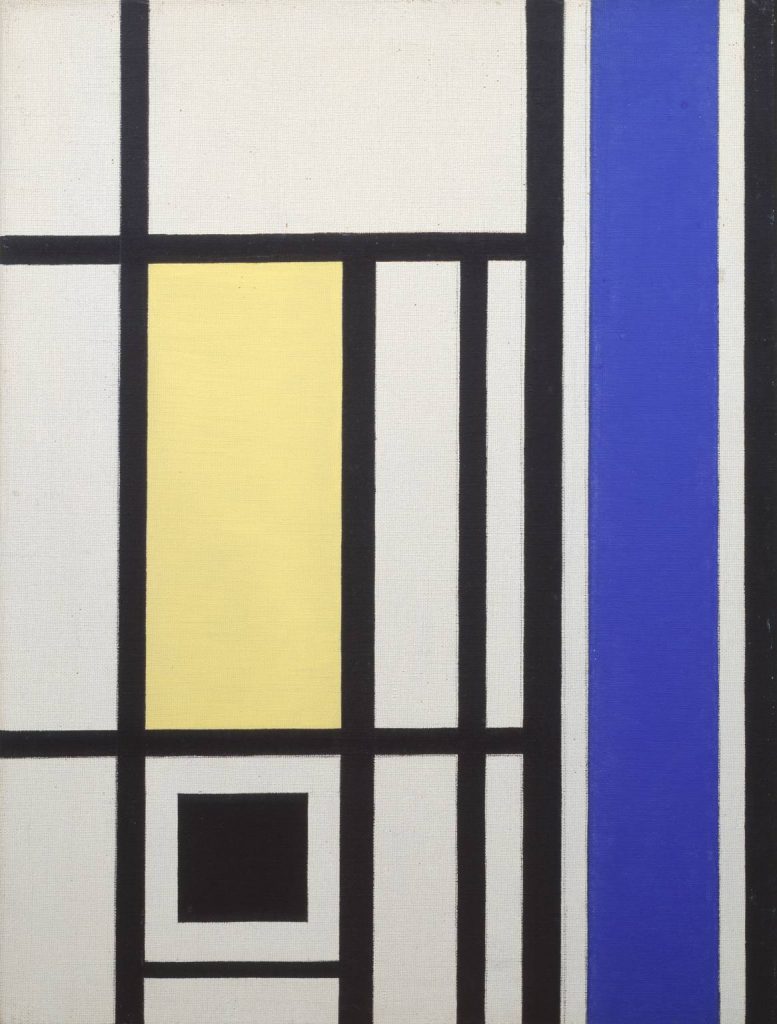
Marlow Moss, Untitled (White, Black, Blue and Yellow), c. 1954, Tate St. Ives, Saint Ives, England, UK.
The Parisian avant-garde captivated Moss the moment she arrived from England. She first studied under the Cubist artist Fernand Léger and eventually had her ambitions as an abstract artist fully realized as she crossed paths with the Dutch modernist Piet Mondrian.
Like Mondrian and others associated with Neoplasticism and Constructivism, Moss considered radical abstraction the ultimate art form for an increasingly fast-paced and technologically advanced society. While Moss is sometimes mislabeled as a Mondrian follower, the two artists inspired each other’s work. In fact, Moss kept a studio a few doors down from Mondrian’s studio, which led to years of creative collaboration.
Conversations between Marlow Moss and Piet Mondrian were no doubt lively and fascinating. At first glance, their geometric compositions appear strikingly similar. Minimalist white space, stark black grid lines, and pure primary colors are present in both. Looking closer, Mondrian’s approach to abstraction emphasized instinct, feeling, and theosophy, while Moss drew from science and mathematics to explore the movement of forms in space.
Most important of all, Moss inspired Mondrian to use the double-parallel-line grid. She believed the double line, compared to the common Neoplastic static single-line grid, created a more desirable expansive feel.
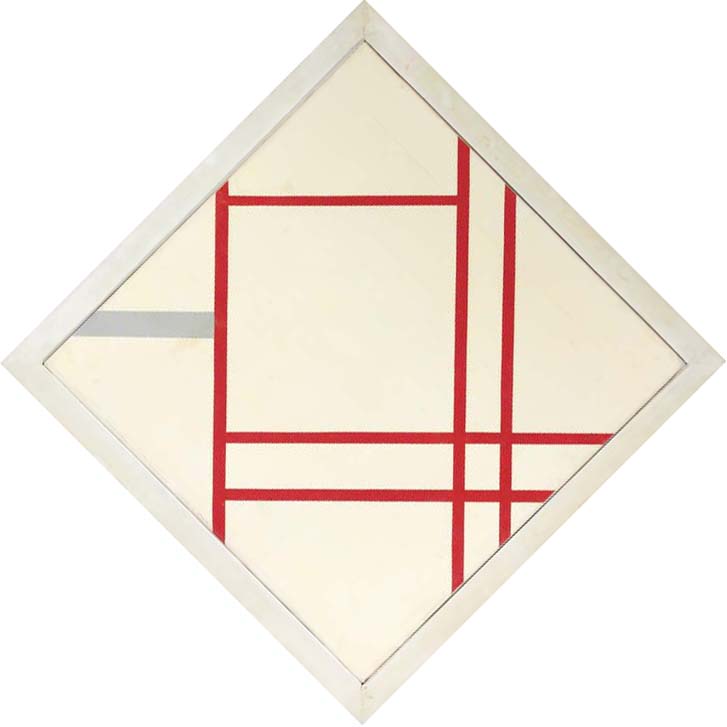
Marlow Moss, Composition in White, Red, and Grey, 1935, private collection. Christie’s.
I am no painter. I don’t see form. I only see space, movement, and light.
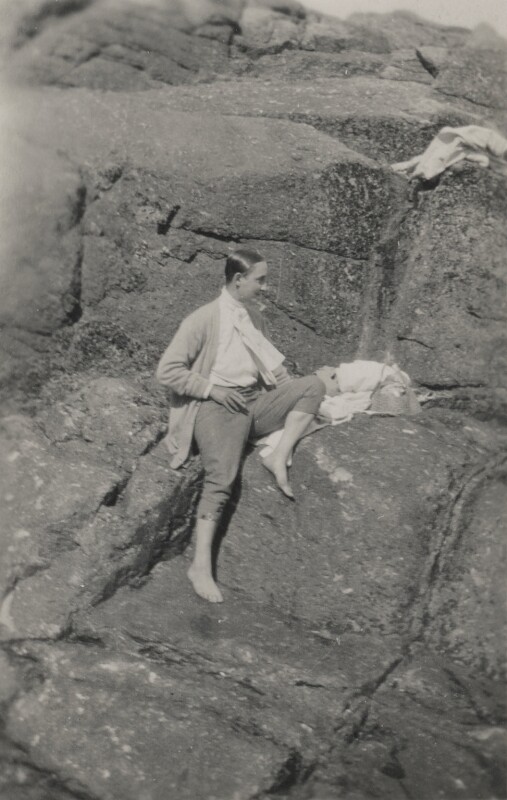
Photograph of Marlow Moss, c. 1920s-1930s, National Portrait Gallery, London, England, UK.
Marlow Moss embraced a genderqueer image throughout her personal and professional life. Her androgynous forename, cropped hairstyle, and stereotypically masculine wardrobe subverted the social conventions of her day, as did her bohemian lifestyle and relationships with women.
In Paris, Mondrian introduced Moss to Netty Nijhoff, a Dutch writer who became a lifelong romantic partner to Moss. Aside from a temporary separation at the start of World War II, followed by Moss’s return to England, the couple remained together. They lived across France in Paris and Normandy, then the Netherlands, before settling in Cornwall.
Just as her compositions had shapes and lines removed from any particular meaning or categorization, Moss’s outward expression deliberately defied the prescribed gender binary. Strangers often assumed Moss was a man, whereas close acquaintances, including Nijhoff, referred to Moss using female pronouns. It is impossible to ascertain, but Moss may have used gender-neutral pronouns if more inclusive language was available.
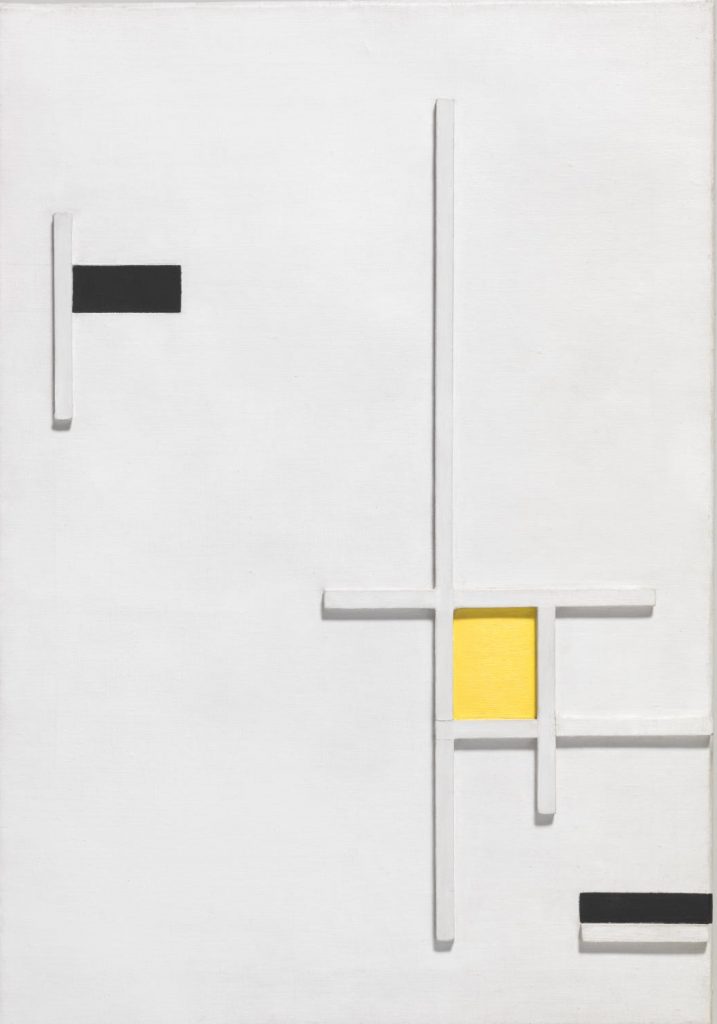
Marlow Moss, Composition in Yellow, Black and White, 1949, Penlee House Gallery & Museum, Penzance, England, UK. Tate.
During World War II, Marlow Moss moved to Cornwall, England. There, she tried to connect with a progressive colony of abstract artists in St. Ives, with Barbara Hepworth and Ben Nicholson among them. Moss did not blend well with the group, but she kept up with her work and remained relevant. Much of Moss’s work was lost after she left France because of the shelling of her Normandy home, but she exhibited paintings and sculptures across the United Kingdom until her death at age 69.
Marlow Moss was influential to the European modern art world in her time. Her work, however, has not been adequately auctioned, represented, or discussed until recently, unlike Mondrian and her other male contemporaries. Even so, Moss’s significance as a pioneer of abstract art—and as an unapologetic, queer individual—is becoming evident.
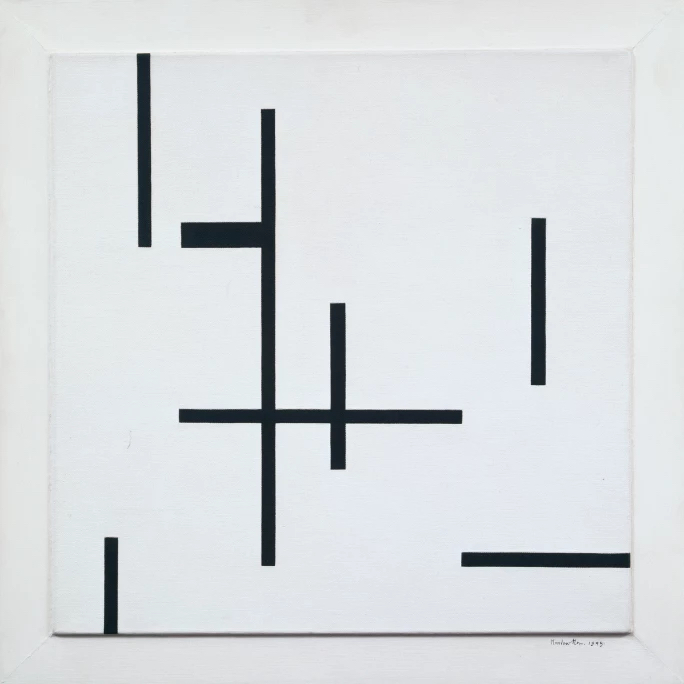
Marlow Moss, Composition in Black and White Number 4, 1949, Museum of Modern Art, New York City, NY, USA.
DailyArt Magazine needs your support. Every contribution, however big or small, is very valuable for our future. Thanks to it, we will be able to sustain and grow the Magazine. Thank you for your help!